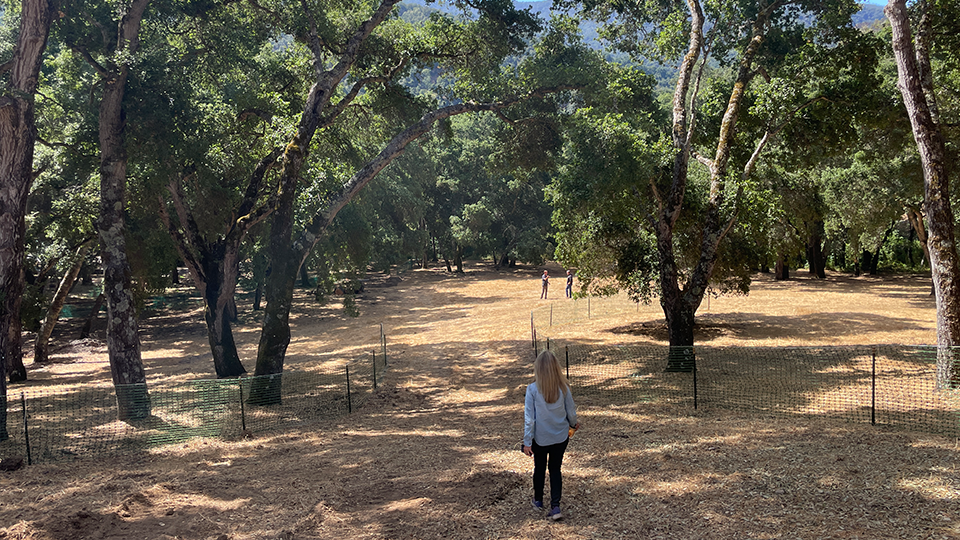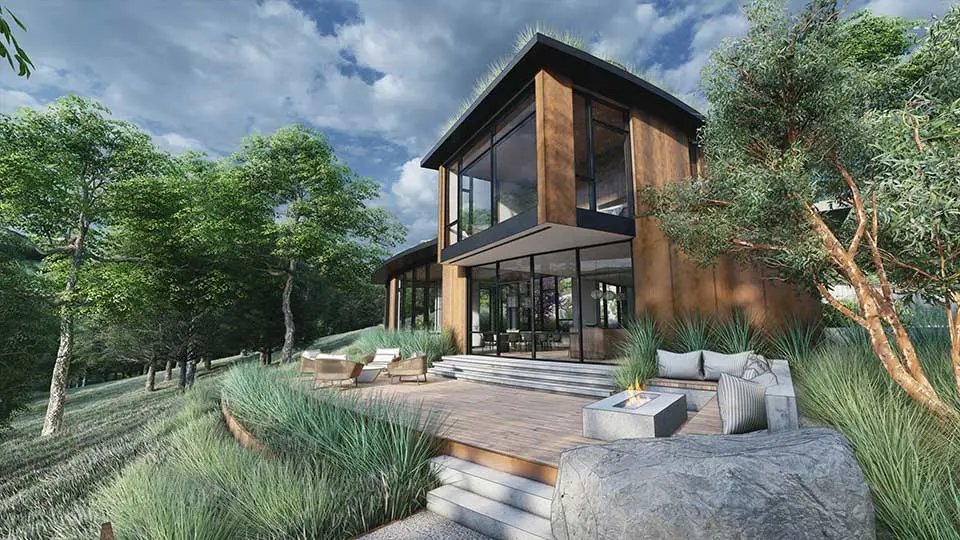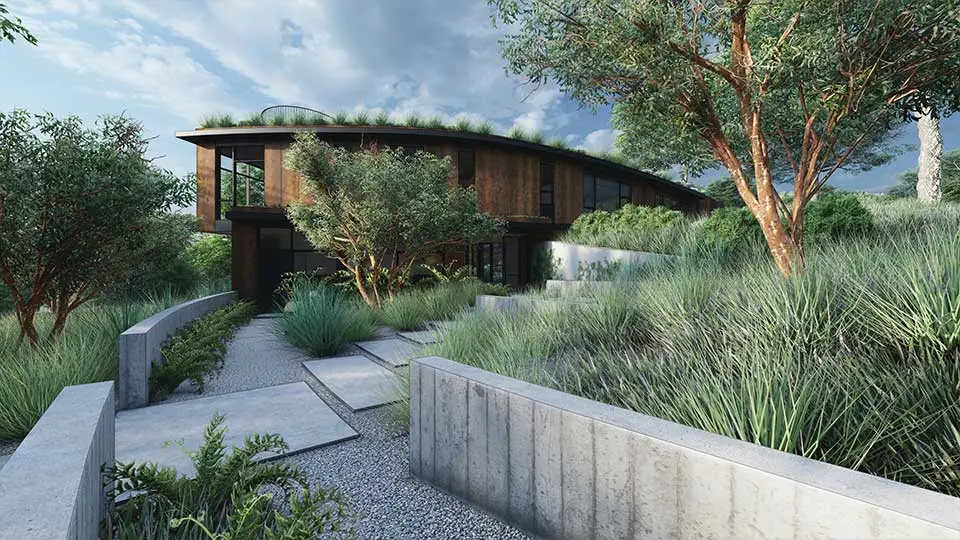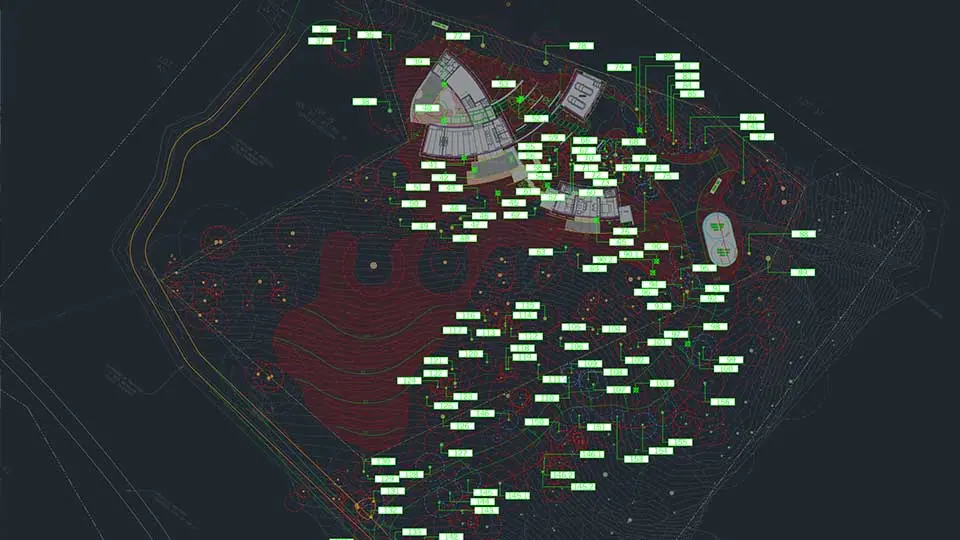& Construction

Integrated BIM tools, including Revit, AutoCAD, and Civil 3D
& Manufacturing

Professional CAD/CAM tools built on Inventor and AutoCAD
Munden Fry Landscape Associates is a leading landscape architecture firm with projects across Northern California. With AutoCAD, they embarked on an ambitious landscape design and infrastructure project to be one of the first International Living Building Challenge Certified residences in California.
Nestled in the Santa Lucia Mountains just outside Carmel-by-the-Sea, California, the Santa Lucia Preserve offers a unique residential community bound by a commitment to preserving and respecting its natural surroundings. Eighteen thousand of the 20,000 acres are permanently protected. Appreciation of the land and use of architectural design in line with the environment are first and foremost.
But the owners of one future home are taking it one step further. They are in the process of building one of the first residences in California to meet the rigorous requirements of The Living Building Challenge. The certification is a performance-based standard of regenerative design that creates positive impact on human and natural systems. The building and landscape will work in tandem to protect surrounding ecologies as well as implement net-positive energy systems, water harvesting, and responsible materials in the project's design.
The site itself is an undulating topography within an oak woodland habitat and a meadow in the foreground. The meadow restoration replenishes the health and biodiversity of the soil, redistributing site won soil and supplementing with organic amendments. With the home designed by Feldman Architecture, Munden Fry Landscape Associates (MFLA) is providing the entire landscape design—from sustainable recommendations for the ideal site location to grading, a greywater system, indigenous plants, and more.
Determining the site location wasn’t a siloed experience. Open collaboration between the two firms enabled exploration and finalizing the ideal location for the building in the surrounding landscape. Having previously completed work on a Living Building Challenge for Silver Oak Winery, MFLA provided important insights to the project. While Feldman Architecture modeled and generated drawings in Autodesk Revit, CAD files were easily exported for MFLA to pick up and work on the design in AutoCAD.
“We had a really great process sketching and developing ideas together and exchanging them in AutoCAD,” says James Munden, partner, MFLA. “As things progressed, we got more and more excited about the idea of really pushing the boundaries of what this project could be.”
For Munden, thinking sustainably for landscape design comes down to “good design sense.” Every aspect of the design, materials, and energy should be put into consideration. By keeping the soil on site for restoration instead of hauling it away, the embodied carbon is reduced in that one change alone.
But there are also much bigger challenges that come along with Living Building Challenge parameters for certification. Despite a well on the property, it is not counted as a water source. Due to California’s historic droughts and dry spells, the residence will require two 20,000-gallon tanks above ground which will serve the primary irrigation needs of the project.
The Living Building Challenge requires zero use of any municipal water for irrigation purposes to meet their certification requirements. Four additional underground tanks work in combination with these two tanks for a greywater system that reduces potable water use in the house. MFLA faced these design challenges and more with the help of AutoCAD.
- James Munden, Partner, Munden Fry Landscape Associates
When the MFLA team first embarked on the Santa Lucia Preserve project, an arborist identified all the trees and shared a “map of trees” in AutoCAD. A civil engineering surveyor also provided more specific information for the firm to evaluate the site location, considering the incredible views and grading due to a steep hillside. All the information was overlayed in AutoCAD for a full view to identify and preserve as many trees as possible.
“With the information from the arborist and the surveyor in AutoCAD, we could start looking at the site in depth,” says Ambrose Luk, senior design associate, MFLA. “We use the offset tool in AutoCAD to draw the boundaries and identify tree protection zones. We also relied on AutoCAD to trace different alignments for the road and zoning for the driveway to make sure a fire truck can move through it.”
- Ambrose Luk, Senior Design Associate, Munden Fry Landscape Associates
The Santa Lucia Preserve project is one of many landscape architecture projects currently underway for MFLA. With AutoCAD as their main design tool, they can dream and deliver a wide range of upcoming projects—from personal residences to an urban housing project in the Western Edition of San Francisco with just over 2.5 acres of open space and the Ocean Beach Climate Change Adaptation Project, led by the San Francisco Public Utilities Commission.
“AutoCAD is one of the most versatile tools you can use to communicate your design with precision,” Luk says. “In landscape, we work with so many different scales. We might need to draw details for a small bench or work on a master plan that covers large acreage. With AutoCAD, everything is scalable and seamless, from the tiniest detail to the macro scale. For a landscape designer, this is very powerful.”
Speed up and streamline your workflow with a subscription to AutoCAD





